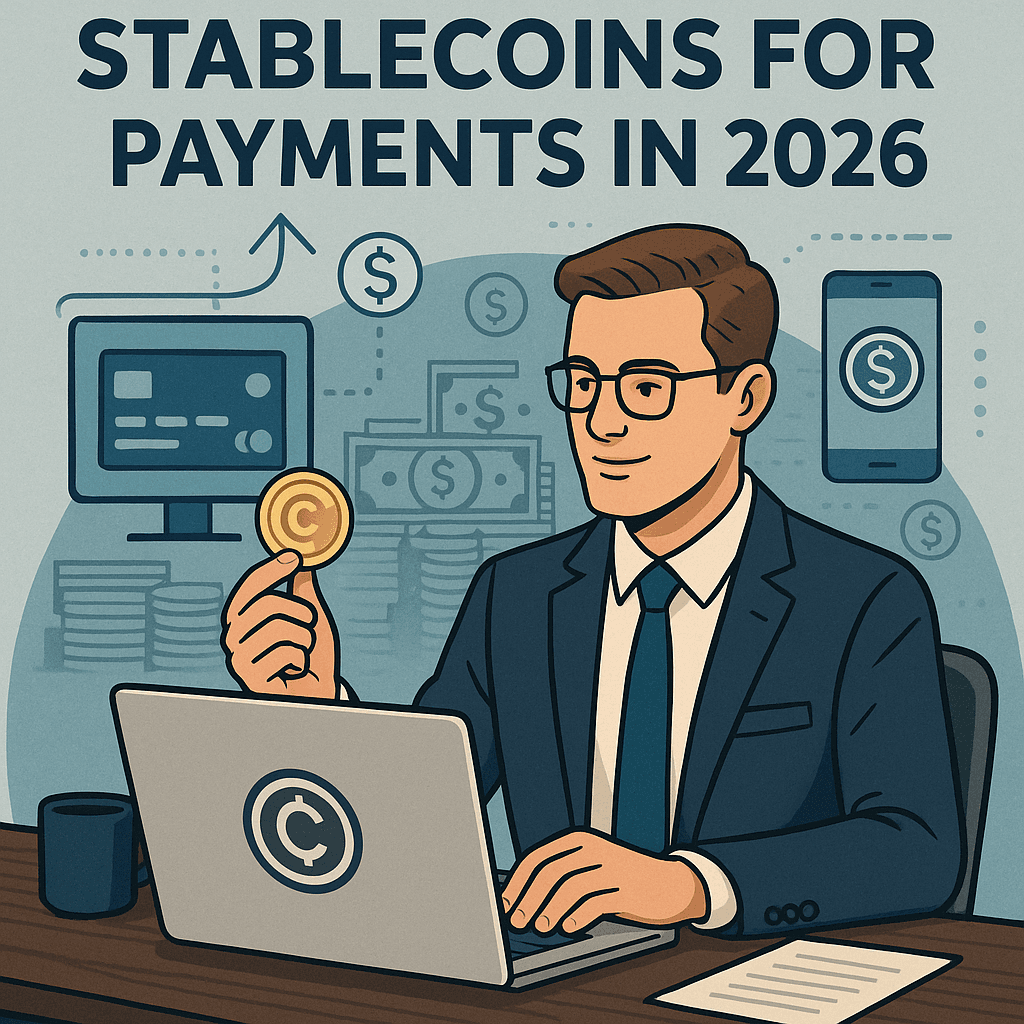We've gone backwards.
After fifteen years of blockchain innovation—smart contracts, DeFi protocols, automated market makers, composable finance—the stablecoin industry has somehow managed to recreate 2009-era Bitcoin functionality with extra steps. Today's leading stablecoin providers essentially offer what Satoshi gave us at the very beginning: the ability to send value from point A to point B. Nothing more.
This isn't progress. It's regression wearing the mask of innovation.
The $68 Million Wake-Up Call Nobody's Hearing
In May 2024, a single user lost $68 million worth of wrapped bitcoin after falling victim to an address poisoning exploit—they sent funds to the wrong address by missing a few characters in the middle of a 42-character string. Gone. Irreversible. No recourse.
But wrong addresses are just one failure mode. What happens when recipients lose access to their wallets? When private keys are compromised, devices are lost, or seed phrases forgotten? The funds become permanently locked, creating economic dead zones where value exists but can't be accessed.
This shouldn't be possible in 2025. We have the technology to make transfers reversible, to add confirmation windows, to build in safeguards that would make such losses impossible. Smart contracts can enforce these protections programmatically. Yet Circle, PayPal, Bridge, and BVNK continue building infrastructure that treats these capabilities as if they don't exist.
The industry has thrown away a decade of innovation to build faster horses instead of cars.
Bitcoin With Extra Steps: The Infrastructure Nobody Asked For
Current stablecoin infrastructure represents the lowest common denominator of blockchain capability: token transfers. That's it. The same basic functionality Bitcoin introduced in 2009, dressed up with stablecoin backing and regulatory compliance checkboxes.
Consider what modern blockchains like Ethereum and Solana actually enable:
Smart contracts that execute complex financial logic automatically
Programmable escrow with milestone-based releases
Automated yield generation on any idle funds
Conditional payments triggered by external events
Multi-party coordination without intermediaries
Reversible transfers with built-in safety mechanisms
Now look at what current stablecoin providers deliver: send tokens from wallet A to wallet B. End of story.
They've taken Formula One chassis and limited them to first gear. They've built smartphones that only make phone calls. They've created programmable money that can't be programmed.
The Mental Model Trap Killing Innovation
Why would established players deliberately ignore these capabilities? Because they're not actually building for blockchain-native operations—they're optimizing for fiat conversion.
Traditional finance companies entering the stablecoin space ask the wrong question. They ask: "How can we make cross-border payments faster?" when they should be asking: "What becomes possible when money itself is programmable?"
This mental model problem creates a structural barrier to innovation. Current providers' entire business models depend on being the bridge between fiat and crypto—the conversion points where they capture value. In a world of truly programmable money, where stablecoins transact directly with other stablecoins, these capture points evaporate.
It's the innovator's dilemma in real-time. Blockbuster couldn't build Netflix because streaming would cannibalize their retail stores. Traditional stablecoin providers can't build programmable money infrastructure because it eliminates the very friction they monetize.
They're optimizing for a dying paradigm while the future demands something fundamentally different.
The Regulatory Catalyst That Changes Everything
The GENIUS Act, which recently passed Congress and establishes the first comprehensive federal regulatory framework for stablecoins, isn't just another piece of legislation. It's the starting gun for a fundamental shift in how global finance operates.
Treasury Secretary Scott Bessent projects the U.S. stablecoin market could grow to over $2 trillion in the coming years—nearly an eightfold increase. But here's what most miss: this growth won't come from better fiat-to-stablecoin rails. It will come from stablecoin-native business operations.
Once U.S. regulatory clarity triggers global adoption, we'll see a rapid progression:
Corporate treasuries holding stablecoins as primary operating capital
B2B transactions settling directly in stablecoins without fiat conversion
International banking consortiums launching their own regional stablecoins
Emerging markets leapfrogging traditional banking entirely
When this shift happens—and it's when, not if—the companies building for today's fiat-conversion use case will find themselves competing in a shrinking legacy market. The winners will be those who understood early that programmable money isn't an incremental improvement. It's a different category entirely.
What Programmable Money Actually Looks Like
Let's make this concrete with a simple example: reversible transfers.
Traditional stablecoin infrastructure treats every transaction as final the moment you hit send. Make a mistake? Too bad. Send to the wrong address? Gone forever. This isn't a technical limitation—it's a choice to ignore available capabilities.
RebelFi's secure transfer protocol demonstrates what's actually possible. You can experience it yourself at transfers.rebelfi.io, where our demo platform showcases real, working programmable money capabilities. Users can set confirmation windows, giving recipients time to verify large transfers before they become final. If something's wrong, either party can flag it. The smart contract handles the logic automatically. No manual intervention. No customer service tickets. Just programmable safeguards built into the money itself.
Now consider a more sophisticated example: payments that generate yield.
When a business sends an invoice payment with 30-day terms, those funds typically sit idle. With programmable money—which you can also test on our platform—that same payment automatically enters yield-generating protocols during the waiting period. The recipient gets their payment plus 4-8% APY. The sender maintains full visibility. The smart contract manages everything programmatically.
This isn't theoretical. These capabilities exist today, live and operational. They're just being ignored by an industry that insists on building digital wire transfers instead of programmable financial instruments.
The Infrastructure Divide: Building for Tomorrow's Winners
Here's the strategic reality: we're approaching a winner-take-all inflection point in financial infrastructure.
On one side, companies optimizing for fiat conversion—building better on-ramps and off-ramps, focusing on regulatory compliance for traditional banking integration, treating blockchain as a faster database for moving traditional value.
On the other side, companies building programmable-first infrastructure—native blockchain capabilities from the ground up, revenue models aligned with automated financial logic, architecture designed for composability and innovation.
The divide isn't about who moves money faster. It's about who recognizes that programmable money enables entirely new categories of financial services:
Treasury management that automatically optimizes yield while maintaining liquidity
Smart escrow that releases funds based on verifiable milestones
Dynamic invoice factoring that adjusts rates based on payment history
Automated revenue sharing that executes without intermediaries
Compliance metadata that travels with transactions, not alongside them
These aren't improvements to existing services. They're impossible-before capabilities that programmable money makes routine.
The Choice Is Already Made
The stablecoin industry stands at a crossroads, but the destination is already clear. One path leads to faster, cheaper, more compliant versions of wire transfers—a legitimate business that will exist for years as the old system winds down. The other path leads to programmable money that transforms how value moves and operates in the global economy.
Most providers have chosen the first path, whether consciously or through inertia. They're building infrastructure for the world that exists today, not the one that's emerging. They're solving for current pain points instead of enabling new possibilities.
At RebelFi, we've chosen differently. We're building for the inevitable future where money isn't just transferred—it's programmed. Where financial logic isn't bolted on after the fact but embedded in the value transfer itself. Where the question isn't "how fast can we move money?" but "what can money do while it moves?"
The regression from programmable blockchains back to simple transfers isn't just a missed opportunity. It's a fundamental misunderstanding of where the industry is heading. While others optimize for today's limitations, we're building the infrastructure for tomorrow's possibilities.
The future doesn't belong to faster wire transfers. It belongs to programmable money. And that future is closer than most realize.



